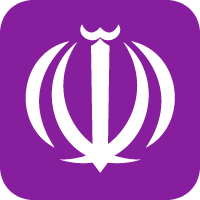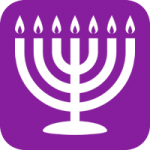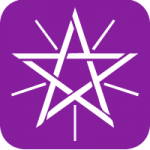Discover everything you need to know about one of the longest chronological records in history with this page on the Persian or Iranian Calendar.
 The original Persian Calendars, also known as Iranian Calendars, are one of the longest chronological records in history. Having been used in Iran (Persia) for over two millennia, the Persian Calendar is one of the most historic Religious Calendars still in existence.
The original Persian Calendars, also known as Iranian Calendars, are one of the longest chronological records in history. Having been used in Iran (Persia) for over two millennia, the Persian Calendar is one of the most historic Religious Calendars still in existence.
However, to suit both administrative and religious purposes, the Persian Calendar has been modified and refined many times over the years and the modern version of the Iranian Calendar is the official calendar used in Iran and Afghanistan.
History of the Persian Calendar
The earliest evidence indicates that Persians were one of the earliest cultures to use the Solar Calendar and shows that their Persian Calendar dates as far back as the second millennium B.C.
Inscriptions and Carvings found on ancient tablets show that the early Iranian culture used a 360 day calendar based entirely around solar observations. Although the days weren´t named, the twelve months of the year (consisting of 30 days) were named for festivals or activities relating to the pastoral year.
Months in the Persian Calendar
Months in the ancient Persian Calendar were divided into two or three parts depending on the Moon Phases. Every six years, a 13th month was added to keep the ancient Persian Calendar synchronized with the passing seasons. The table below lists the Persian Months in the ancient Persian Calendar:
| Order | Corresponding Julian months | Old Persian | Elamite spelling | Meaning | Corresponding Babylonian month |
| 1 | March–April | Ādukanaiša | Hadukannaš | uncertain | Nīsannu |
| 2 | April–May | Θūravāhara | Turmar | Possibly "(Month of) strong spring" | Ayyāru |
| 3 | May–June | Θāigraciš | Sākurriziš | "Garlic-collecting month" | Sīmannu |
| 4 | June–July | Garmapada | Karmabataš | "Heat-station (month)" | Du'ūzu |
| 5 | July–August | – | Turnabaziš | – | Ābu |
| 6 | August–September | – | Karbašiyaš | – | Ulūlū |
| 7 | September–October | Bāgayādiš | Bakeyatiš | "(Month) of the worship of baga (god, perhaps Mithra)" | Tašrītu |
| 8 | October–November | *Vrkazana | Markašanaš | "(Month) of wolf killing" | Arahsamna |
| 9 | November–December | Āçiyādiya | Hašiyatiš | "(Month) of the worship of the fire" | Kisilīmu |
| 10 | December–January | Anāmaka | Hanamakaš | "Month of the nameless god(?)" | Tebētu |
| 11 | January–February | *Θwayauvā | Samiyamaš | "The terrible one" | Šabāţu |
| 12 | February–March | Viyax(a)na | Miyakannaš | "Digging-up (month)" | Addāru |
The Current Persian Calendar
As a type of Solar Calendar, the Persian Calendar officially begins with the Spring equinox and the years are designated AP for Anno Perisco. In March 2014, the year 1393 officially began in the Persian Calendar. To find out the corresponding year according to the Gregorian Calendar, you simply need to add 621 or 622 (depending on the month of the year) to a Solar Year.
The modern Persian Calendar is divided into 12 months which include:
- 31 days in the first six months of the year
- 30 days in the five following months of the year
- 29 or 30 days in the final month of the year (depending on whether it is a leap year or not)
You can also have a look at the months which make up the modern Persian Calendar below for a more comprehensive understanding on when the months of the current Iranian Calendar begin and end:
| NAME | IRANIAN NAME | START DATE | DURATION | |
|---|---|---|---|---|
| 1 | Farvardín | فروردین | 21st March | 31 |
| 2 | Ordibehesht | اردیبهشت | 21st April | 31 |
| 3 | Jordad | خرداد | 22nd May | 31 |
| 4 | Tir | تیر | 22nd June | 31 |
| 5 | Mordad | مرداد | 23rd July | 31 |
| 6 | Shahrivar | شهریور | 23rd August | 31 |
| 7 | Mehr | مهر | 23rd September | 30 |
| 8 | Abán | آبان | 23rd October | 30 |
| 9 | Azar | آذر | 22nd November | 30 |
| 10 | Dey | دی | 22nd December | 30 |
| 11 | Bahmán | بهمن | 21st January | 30 |
| 12 | Esfand | اسفند | 20th February | 29/30 |
Persian Calendar Date Converter
To find out what the dates in the Persian Calendar are equivalent to in the commonly used Gregorian Calendar, feel free to use the Persian Calendar Date Converter.











